Porsche Taycan revealed: The monster stats behind Porsche’s big electric bet
After months of teases, videos, and dribbled out specs, the all-electric Porsche Taycan is finally here.
Here’s what we know from its simultaneous debut in Canada, China, and Germany today, as well as from a technical workshop I recently attended for the Taycan at Porsche’s North American headquarters in Atlanta.
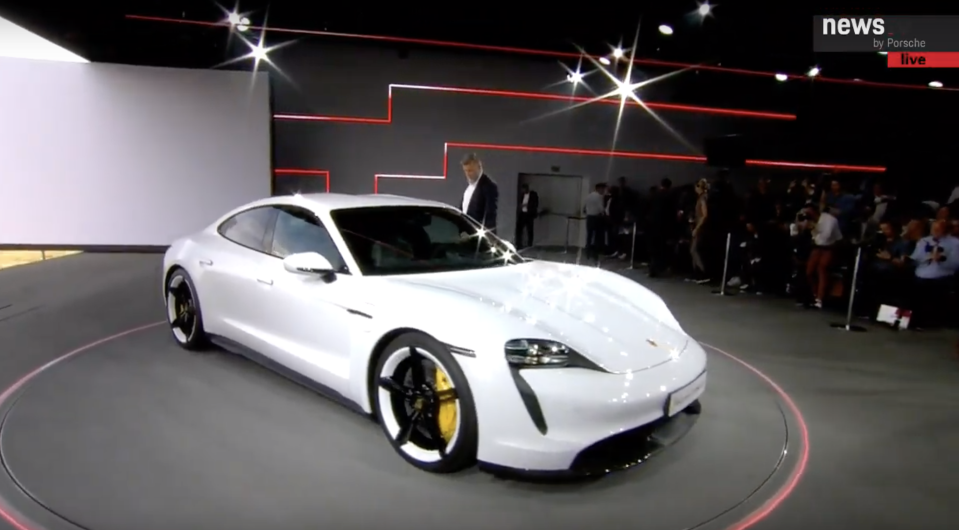
The Taycan will be available in two models to start with: the Taycan Turbo and Turbo S. The Taycan Turbo starts at $150,900, and the more powerful Taycan Turbo S will set you back $185,000. We’ll get to the spec differences later.
In terms of design, Porsche was adamant about noting that Taycan is a true Porsche, starting with its outward appearance. The Taycan has the typical Porsche “fly line,” think the 911 coupe profile. Porsche also says this means the body should have a “small head on wide shoulders” — a characteristic you do see on the Taycan.
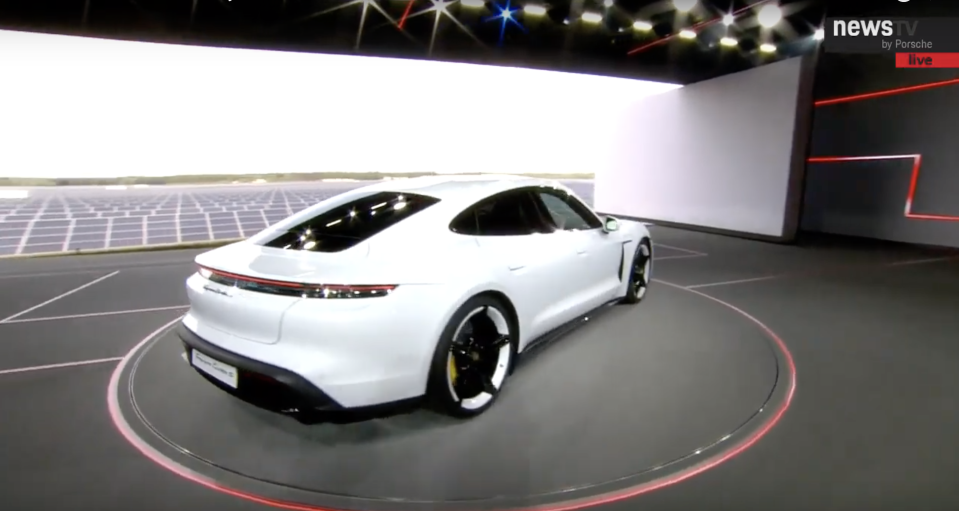
And that design is actually quite slippery. Porsche claims a sports car like 0.22 drag coefficient, with “no compromises on the design,” said Dr. Stefan Weckbach, VP of the Taycan Product Line.
Key features and specs
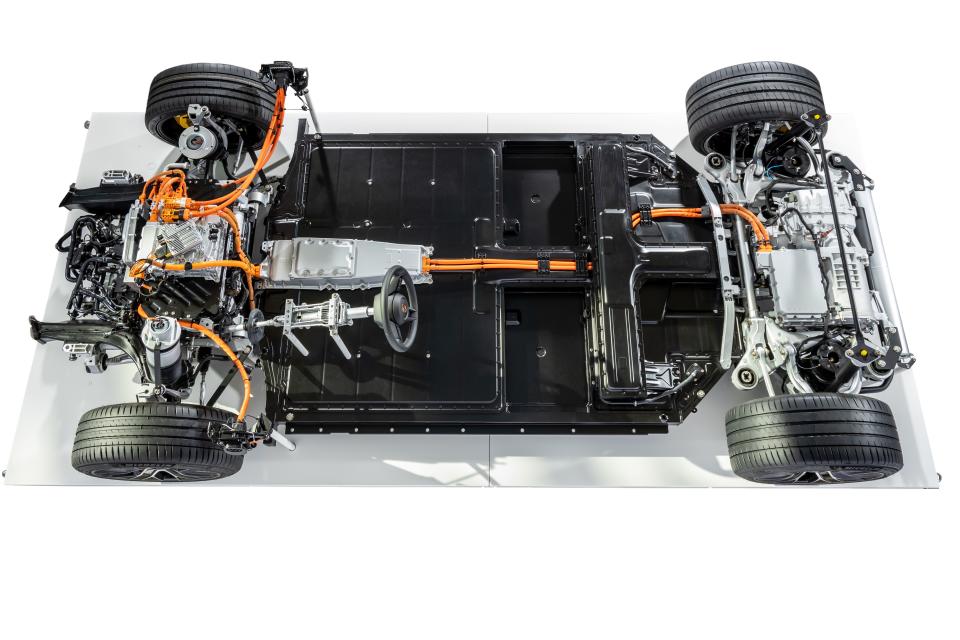
Now to all the good stuff — the performance specs. The Taycan is powered by two motors, one on each axle. The motors are PMSM (or permanent magnet synchronous machine motors), which are quite different than the ASM (asynchronous) motors that are in most electric vehicles. Porsche says PMSM motors benefit from compact design, high power density, high efficiency (meaning high, continuous power), and good thermal behavior, which translates to good performance and service life. The only real downside here is cost — they are more expensive.
On the rear axle, the motor is paired with a 2-speed transmission: the first gear being quite short, and the second gear for higher speed and efficiency. The front motor has only a single speed transmission. The entire apparatus is powered by an 800 volt system, which Porsche says is completely new in passenger cars, as most use 400 volt systems (including Tesla). The 800 volt systems allow for faster charging and use smaller cables. Power comes from a 93-kWh battery, that Porsche calls Performance Battery Plus.
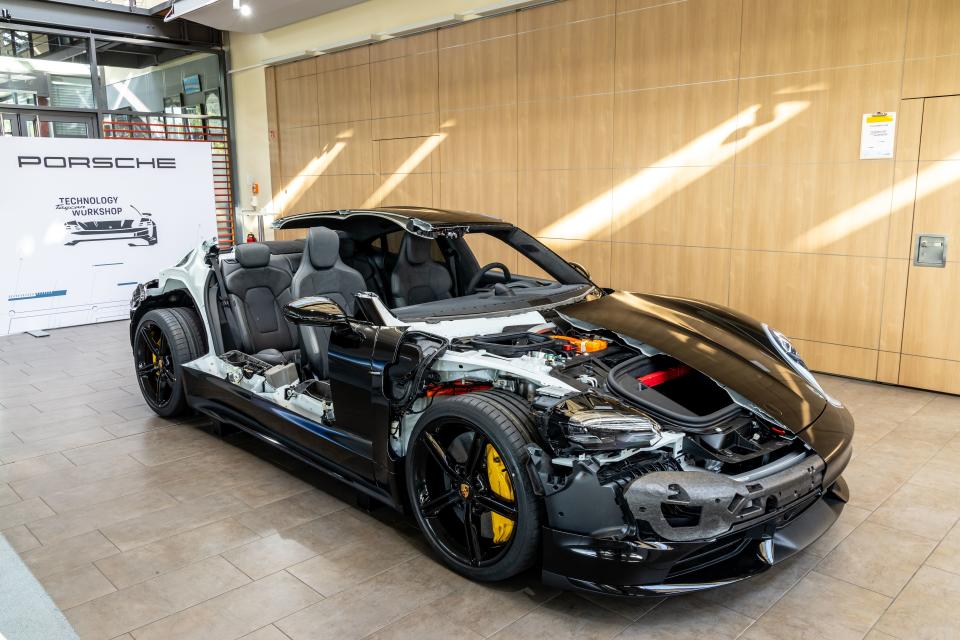
Here’s the performance breakdown of the two Taycan versions:
Turbo S
21-inch wheels
System torque - 774 lb-ft
Overboost - 560 kW (750hp)
0-60 - 2.6s (with launch control)
162 mph top speed
Range - 388 - 412 km
Charging time - 5-80% in 22.5 min
Turbo
20-inch wheels
System torque - 626 lb-ft
Overboost- 500 kW (670hp)
0-60 - 3.0s
162 mph top speed
Range - 381- 450 km
Charging time - 5-80% in 22.5 min
Those are some pretty wild numbers for any car, and up there with the likes of the Model S performance. We don’t have EPA estimated range figures yet.
Now for the tech geeks out there, a bit more about the 93 kWh battery. The battery is made for Porsche by LG, and it is comprised of 396 cells. The battery has a voltage level of 610 V - 835 V, a nominal voltage of 723 V, and max power output of 620 kW.
Inside and on the test track
We were able to experience a pre-production Taycan at Porsche’s North American headquarters in Atlanta. Let me start by allaying some fears. Purists you have no reason to worry. Porsche really has outdone itself in taking the company’s sports car history into the future without losing that Porsche heritage.
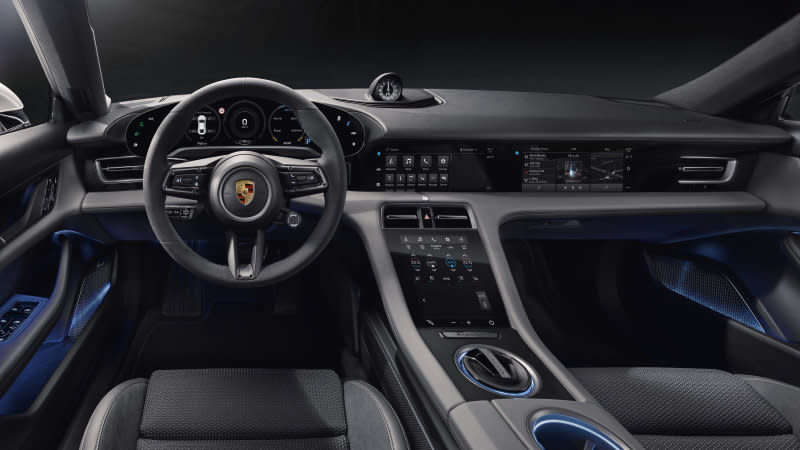
The driver is welcomed in the Taycan by the typical Porsche seating position, which is apparently very similar to the 911’s, believe it or not. The familiar hood and gauge cluster appear to be there, but turn on the car and you see that its all virtual, with no massive analog rev counter in the middle anymore. But fear not, the electronic gauges are clear and distinct, and can be changed to the driver’s liking.

For the first time, there’s an optional passenger display, so your companion can enjoy looking at some efficiency (or performance) stats in real time, among other things. Fit and finish, materials, workmanship were all up to Porsche quality here, even in this pre-production model, meaning they were top of the line. This is an area that Tesla still has trouble with - even in the top of the range Model S and Model X Performance trims.
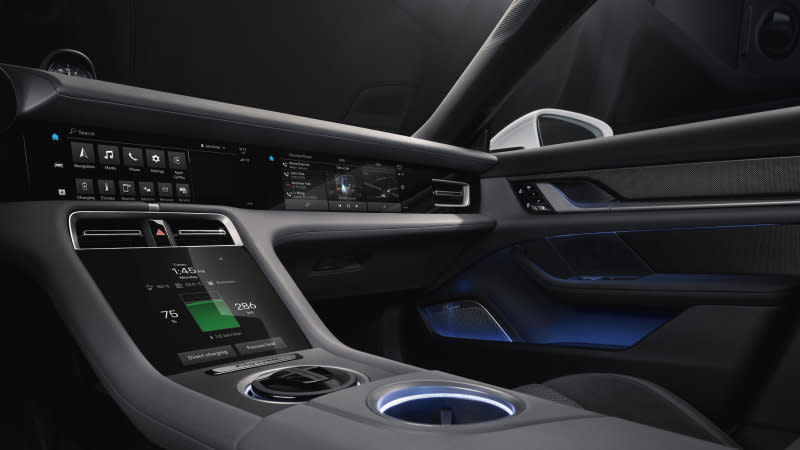
We were not allowed to drive the Taycan, instead Porsche test drivers took us around the PEC test track — and they drove in earnest.
Here is where the proof was in the pudding. The Taycan lept off the ground seemingly in launch control, burying me and other journalists into the passenger seat as the electric torque came on instantaneously. Then came the long and twisty turns, the Taycan handling them with aplomb and at high speed, with just a touch of oversteer that was easily controlled (so it appeared).
The chassis was rock solid; here’s where Porsche’s advanced work in creating a chassis with many different types of materials to enhance rigidity and agility, as well as having the heavy battery back below our feet, which lowered the center of gravity tremendously, and slingshotted the Taycan around the track in what seemed like no time at all.
Again, the chassis and handling of this car are top notch - the Taycan is definitely a Porsche. And even in our pre-production model, there were no rattles, shakes, or shudders - all we heard was a futuristic electric blur of the two motors, as the car carved the corners, and pushed us deeper into our seats throughout the short test drive.
I was extremely impressed with the Taycan’s technology, specs and performance. I can’t wait to test it for myself.
——
Pras Subramanian is a reporter for Yahoo Finance. You can follow him on Twitterand on Instagram.
Related stories:
The Tesla Model 3 will be a great car—someday
Review: The Jaguar I-PACE electric crossover
Road Test: 2018 Porsche Panamera Turbo S E-Hybrid Sport Turismo


